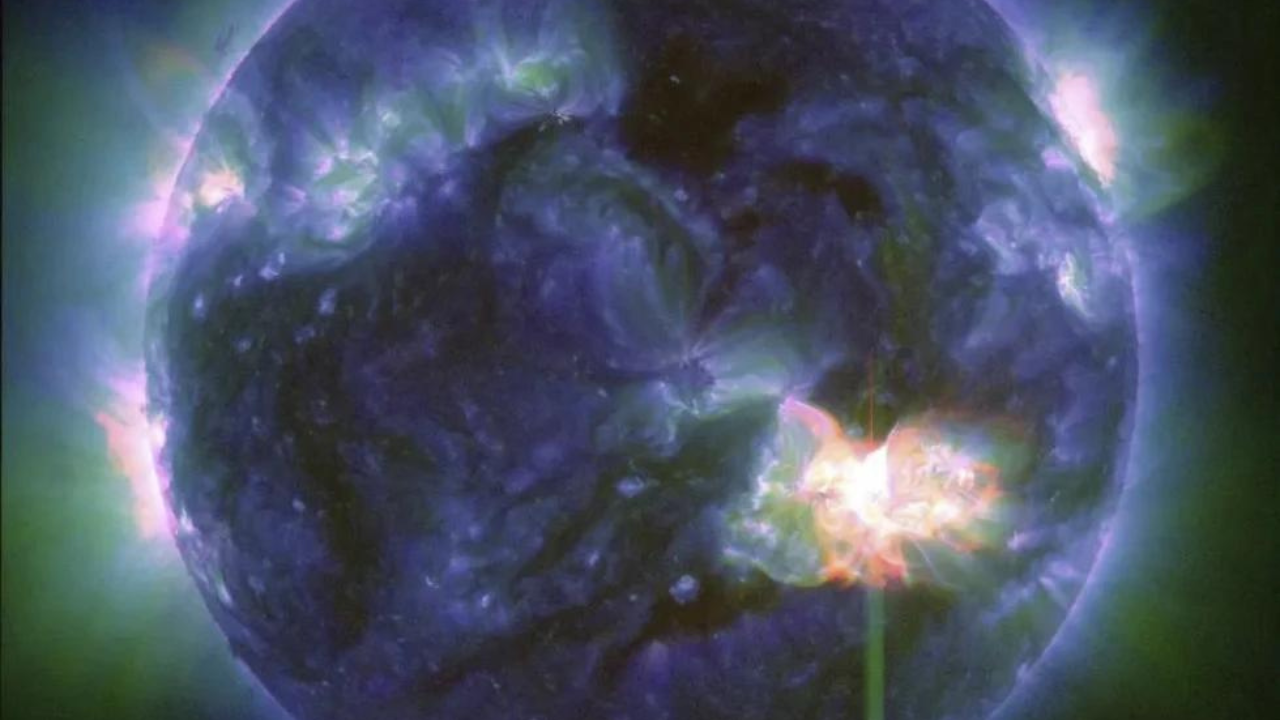Solar Storm Alert: Earth Braces for Moderate Geomagnetic Disturbance
Photo : AP
It is confirmed that the Sun is nearing its Solar Maximum, the regular period of greatest solar activity during the Sun’s 11-year solar cycle. As we are approaching the Solar Maximum, our Sun is observing heightened solar activity. Recent data from the NOAA forecast indicate that Earth is on the verge of experiencing a series of geomagnetic storms due to recent solar activities. These disturbances in solar weather are primarily driven by coronal mass ejections (CMEs) and solar flares, which can have varying impacts on our planet.
On June 10th, NOAA forecasters predicted the potential for G2-class geomagnetic storms, a moderate level on the geomagnetic scale. This prediction follows an M9.7-class solar flare observed on Saturday, June 8th, which launched a significant CME into space. This CME is characterised by its brightness and massiveness, which typically indicates a strong potential for impact if it directly hits Earth.
Thankfully, the current forecast suggests that this CME will only deliver a glancing blow rather than a direct hit. While a direct impact could trigger a severe geomagnetic storm, the anticipated contact is expected to result in moderate geomagnetic activity instead.
NOAA Alerts Geomagnetic Storm
The NOAA has issued an alert stating that periods of G1-G2 (minor to moderate) geomagnetic storms are likely on June 10th, today. The forecast further suggests that geomagnetic storms are possible with G1-level storms possibly extending into June 11th. It’s important to note that while these storm levels are considered moderate, they still have the potential to cause disruptions.
A G2-class geomagnetic storm, as forecasted, can lead to increased auroras visible at lower latitudes than usual. It might also cause minor impacts on satellite operations and power grids. Communications and GPS systems may experience brief interruptions as NOAA mentioned “R1-R2 (Minor-Moderate) radio blackouts are expected, with a chance for R3 (Strong) or greater events, on 10-11 Jun. There is a chance for R1-R2 events and a slight chance for R3 or greater events on 12 June.” However, these effects are generally manageable and do not pose significant risks to human activities.
ISRO’s Role In Solar Storm Observation
India’s Aditya-L1 solar mission is capturing stunning images of the Sun during recent solar storms. The mission’s two remote sensing payloads are constantly taking pictures of the Sun’s dynamic activities. In May, a massive solar storm erupted – the biggest in two decades. The Indian Space Research Organisation (ISRO) has now shared images of this powerful storm captured by Aditya-
Aditya-L1 is India’s first dedicated mission to observe the Sun. It was launched in September 2023 aboard the PSLV C57 rocket. The key objectives are to study the Sun’s upper atmosphere (chromosphere and corona), understand how the corona gets heated, investigate plasma physics, and observe processes that trigger solar flares and coronal mass ejections. By closely monitoring the Sun, Aditya-L1 will help scientists better comprehend our star and improve space weather forecasting capabilities.



:max_bytes(150000):strip_icc()/GettyImages-2163516148-331b6190765d49ef8d71bf48ba233e02.jpg)
